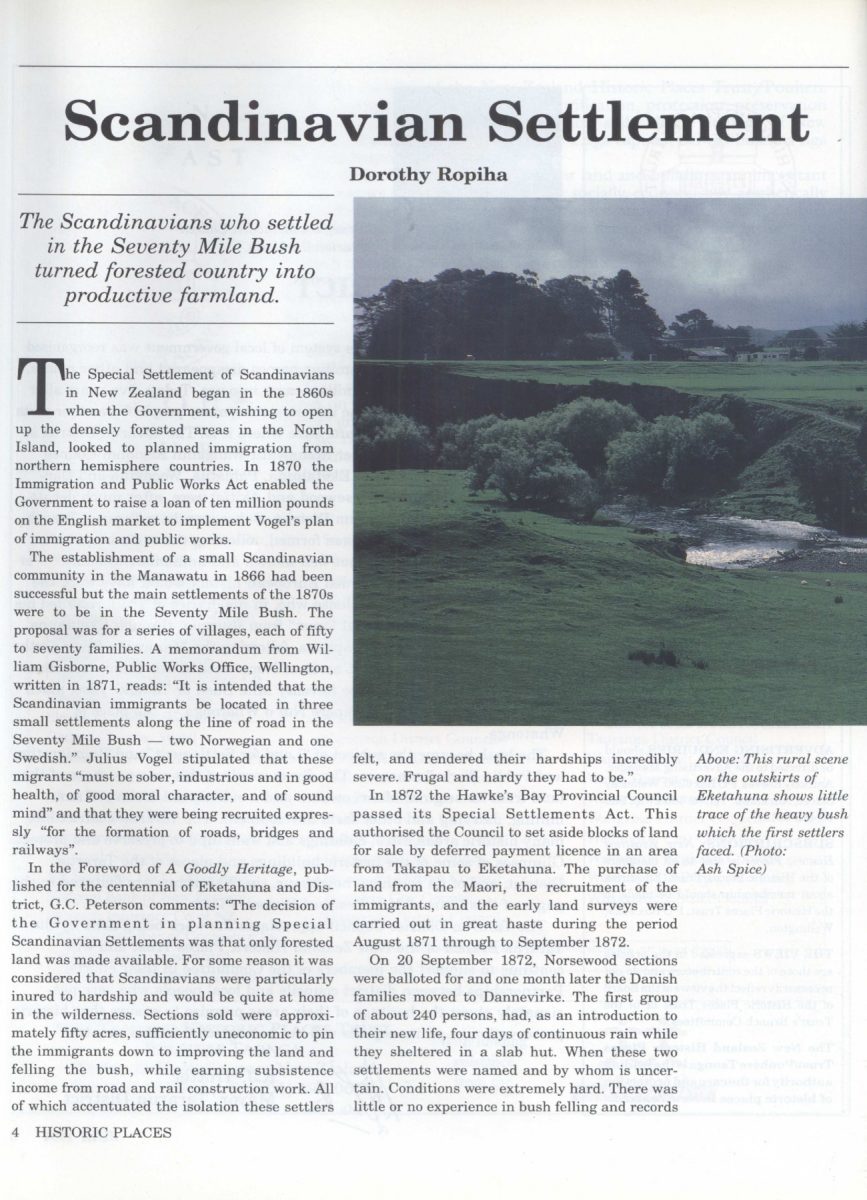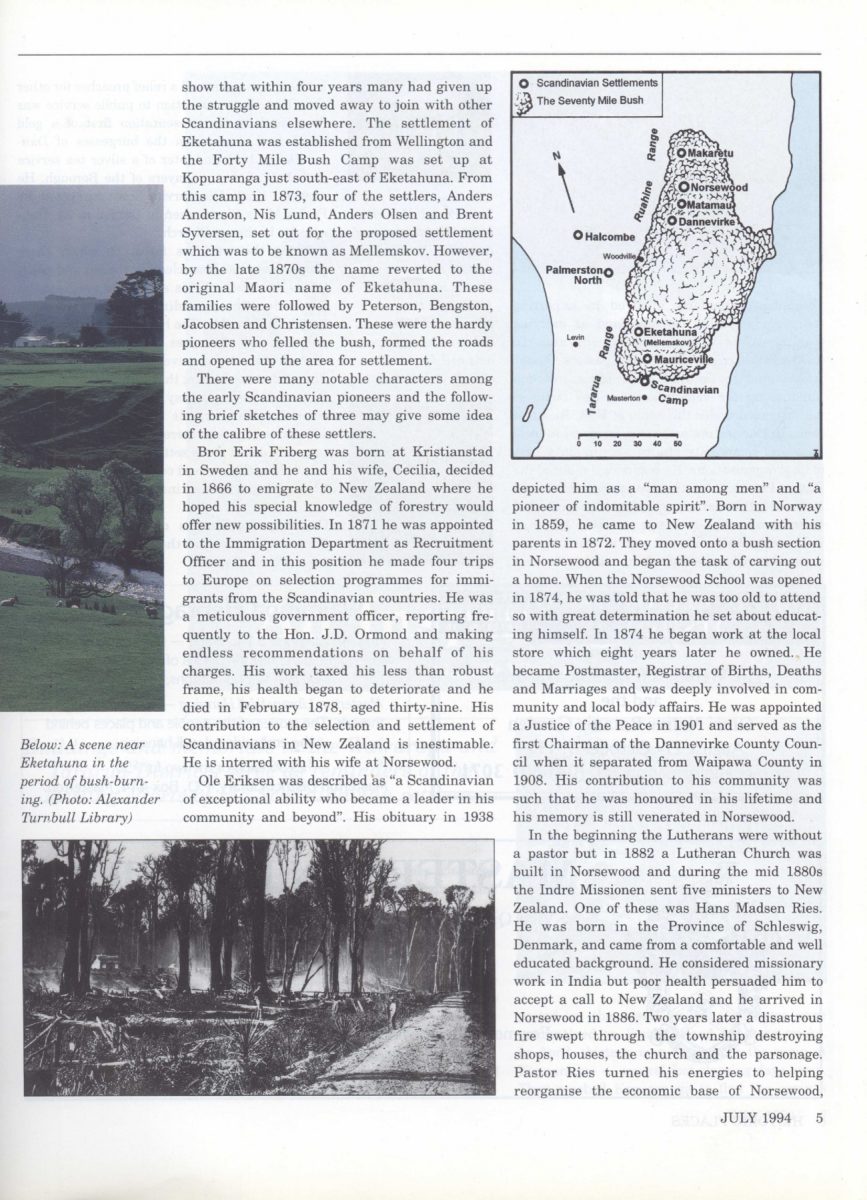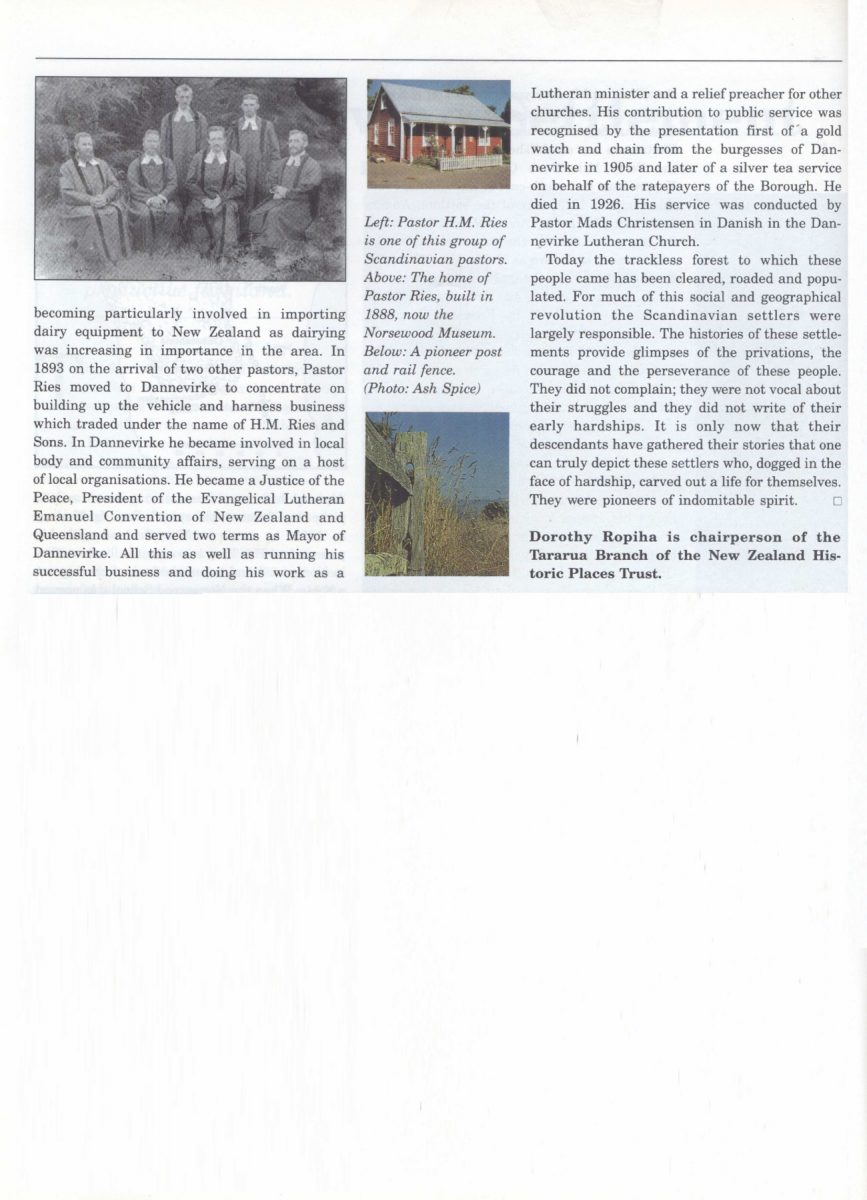show that within four years many had given up the struggle and moved away to join with other Scandinavians elsewhere. The settlement of Eketahuna was established from Wellington and the Forty Mile Bush Camp was set up at Kopuaranga just south-east of Eketahuna. From this camp in 1873, four of the settlers, Anders Anderson, Nis Lund, Anders Olsen and Brent Syversen, set out for the proposed settlement which was to be know as Mellemskov. However, by the late 1870s the name reverted to the original Maori name of Eketahuna. Theses families were followed by Petersen, Bengston, Jacobsen, Christensen. These were the hardy pioneers who felled the bush, formed the roads and opened up the area for settlement.
There are many notable characters among the early Scandinavian pioneers and the following brief sketches of three may give some idea of the calibre of these settlers.
Bror Erik Friberg was born at Kristianstad in Sweden and he and his wife, Celica, decided in 1866 to emigrate to New Zealand where he hope his special knowledge of forestry would offer new possibilities. In 1871 he was appointed to the Immigration Department as Recruitment Officer and in this position he made four trips to Europe on selection programmes for immigrants from the Scandinavian countries. He was a meticulous government officer, reporting frequently to the Hon. J.D. Ormond and making endless recommendations on behalf of his charges. His work taxed his less than robust frame, his health began to deteriorate and he died in February 1878, aged thirty-nine. His contribution to the selection and settlement of Scandinavians in New Zealand is inestimable. He is interred with his wife at Norsewood.
Ole Ericksen was described as “a Scandinavian of exceptional ability who became a leader in his community and beyond.” His obituary in 1938 depicted him as a “man among men” and “a pioneer of indomitable spirit”. Born in Norway in 1859, he came to New Zealand with his parents in 1872. They moved onto a bush section in Norsewood and began the task of carving out a home. When the Norsewood School was opened in 1874, he was told that he was too old to attend so with great determination he set about educating himself. In 1874 he began work at the local store which eight years later he owned. He became Postmaster, Registrar of Births, Deaths and Marriages and was deeply involved in the community and local body affairs. He was appointed a Justice of the Peace in 1901 and served as the first Chairman of the Dannevirke county Council when it separated from Waipawa County Council in 1908. His contribution to his community was such that he was honoured in his lifetime and his memory is still venerated in Norsewood,
In the beginning the Lutherans were without a pastor but in 1882 a Lutheran Church was built in Norsewood and during the mid 1880s the Indre Missionen sent five ministers to New Zealand. One of these Hans Masen Ries. He was born in the province of Schleswig, Denmark, and came from a comfortable and well educated background. He considered missionary work in India but poor health persuaded him to accept a call to New Zealand and he arrived in Norsewood in 1886. Two years later a disastrous fire swept through the township destroying shops, houses, the church and the parsonage. Pastor Ries turned his energies to helping reorganise the economic base of Norsewood.
Photo caption –
Below: A scene near Eketahuna in the period of bush-burning. (Photo: Alexander Turnbull Library)
Text on map –
Scandinavian Settlements
The Seventy Mile Bush
Ruahine Range
Halcombe
Palmerston North
Levin
Tararua Range
Makaretu
Norsewood
Matamau
Dannevirke
Eketahuna(Mellemskov)
Mauriceville
Scandinavian Camp
Masterton
JULY 1994 5














Do you know something about this record?
Please note we cannot verify the accuracy of any information posted by the community.